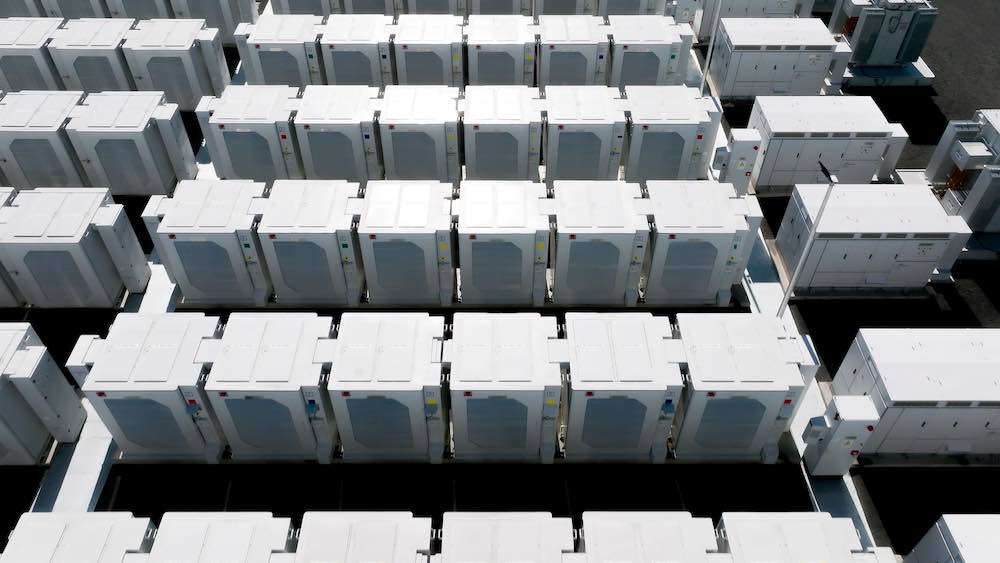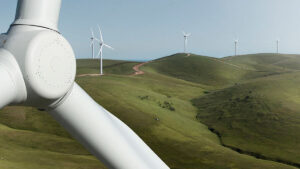The biggest tender for battery storage to be held in Australia will open this week, with the federal government seeking around four gigawatts of capacity and 16 gigawatt hours of storage across six states and territories.
The tender is officially the third of a series of tenders under the federal government’s Capacity Investment Scheme, which is seeking to ensure that the country meets its 82 per cent renewable energy target by 2030. In all, at least 23 GW of new wind and solar generation capacity and 9 GW (36 GWh) of battery storage capacity is being sought.
The battery storage component is particularly significant given its growing prominence in the Australian grid, mostly as a result of its ability to provide multiple critical grid services (frequency control, inertia and acting as a kind of giant shock absorber for the grid) and in time shifting excess renewables to the morning and evening demand peaks.
The 4 GW is about twice the capacity of big battery installations currently fully commissioned in the grid (not counting the many gigawatts also under construction), and the storage capacity is about six times more, and reflects the increase in the storage component as battery projects focus more on energy arbitrage.
The tender will be held in a two stage process, with the first focusing on project benefits closing in December, and the second focusing on financial value for the shortlisted projects closing in May.
Winners are due to be announced in September, next year, although that date may change. The next federal election is likely to be held next May, and the opposition Nationals have threatened to tear up Commonwealth contracts should they be returned to power, and may be emboldened to repeat the threat in the light of Trump’s victory in the US.
Battery storage has been the biggest bright spot in Australia’s green energy transition, at least in terms of large scale projects. On the smaller scale, rooftop PV is also shining brightly, but its impact on the grid is one of the reasons why there is a greater push for more storage, and big batteries appear to be the main focus.
That could change in coming years, particularly given federal energy minister Chris Bowen has announced that standards have been agreed that will pave the way for electric vehicles to effectively act as “batteries on wheels” by injecting power back into the grid via bidirectional charging.
Bowen says the first of these could be connected by the end of the year, but the pace will depend on the appetite and willingness of EV makers, the availability of cost competitive charging equipment, and the interest of EV owners.
It may be some time before that occurs at scale, although the storage potential is huge.
State governments have also encouraged household batteries with incentives and rebates, and NSW is the latest to do so. But the uptake is still slow because – while useful to the household and the grid – they are not yet proven money making machines.
Big batteries, on the other hand, are proving to be a good investment, but the government is seeking to provide underwriting agreements under the CIS to lower the cost of finance, and because many of the markets that batteries can play in are yet to be fully developed, which means there is sometimes no revenue to pay for the things they do.
The big battery tender officially opens on Wednesday (November 13), and last week the federal government revealed that discussions with state and territory governments had results in some priority allocations being made.

The biggest battery allocation will go to Victoria (1 GW), followed by NSW (0.9 GW), and South Australia (0.4 GW), with a further 1.7 GW of unallocated capacity open to these states plus projects in Queensland, Tasmania and the ACT.
In Western Australia, which operates its own isolated grid with different market rules, a separate tender seeking 500 MW and 2,000 MWh of capacity is also being planned.
A first “pilot” battery tender held earlier this year for Victoria and South Australian projects was massively oversubscribed with 600 MW of capacity and 2,400 MWh sought and was more than 32 times oversubscribed.
It resulted in more capacity being awarded, with more than 1,000 MW of capacity in six different projects, two in Victoria and four in South Australia.
In Victoria, these were the 350 MW, 1,400 MWh Wooreen battery to be built by energy giant EnergyAustralia just outside of Morwell, and 115 MW, 230 MWh Springvale Energy Hub, which will be built by Progress Power on a former landfill site in south-eastern Melbourne.
EnergyAustralia was also successful with another battery project in South Australia, a 50 MW, 200 MWh battery it will build near the Hallett wind farms near Canownie, while Pacific Blue, which used to be known as Pacific Hydro, has already begun building the 60 MW, 143 MWh battery next to its Clements Gap wind farm in the mid-north.
The other winners in South Australia were the Zen Energy’s Solar River hybrid project, which will feature a 170 MW /653 MWh battery paired with a 230 MW solar farm, and the 250 MW, 1,000 MWh Limestone Coast battery, proposed by Pacific Green near the border with Victoria, and which will be the biggest in the state.
See also Renew Economy’s Big Battery Storage Map of Australia for more information.










